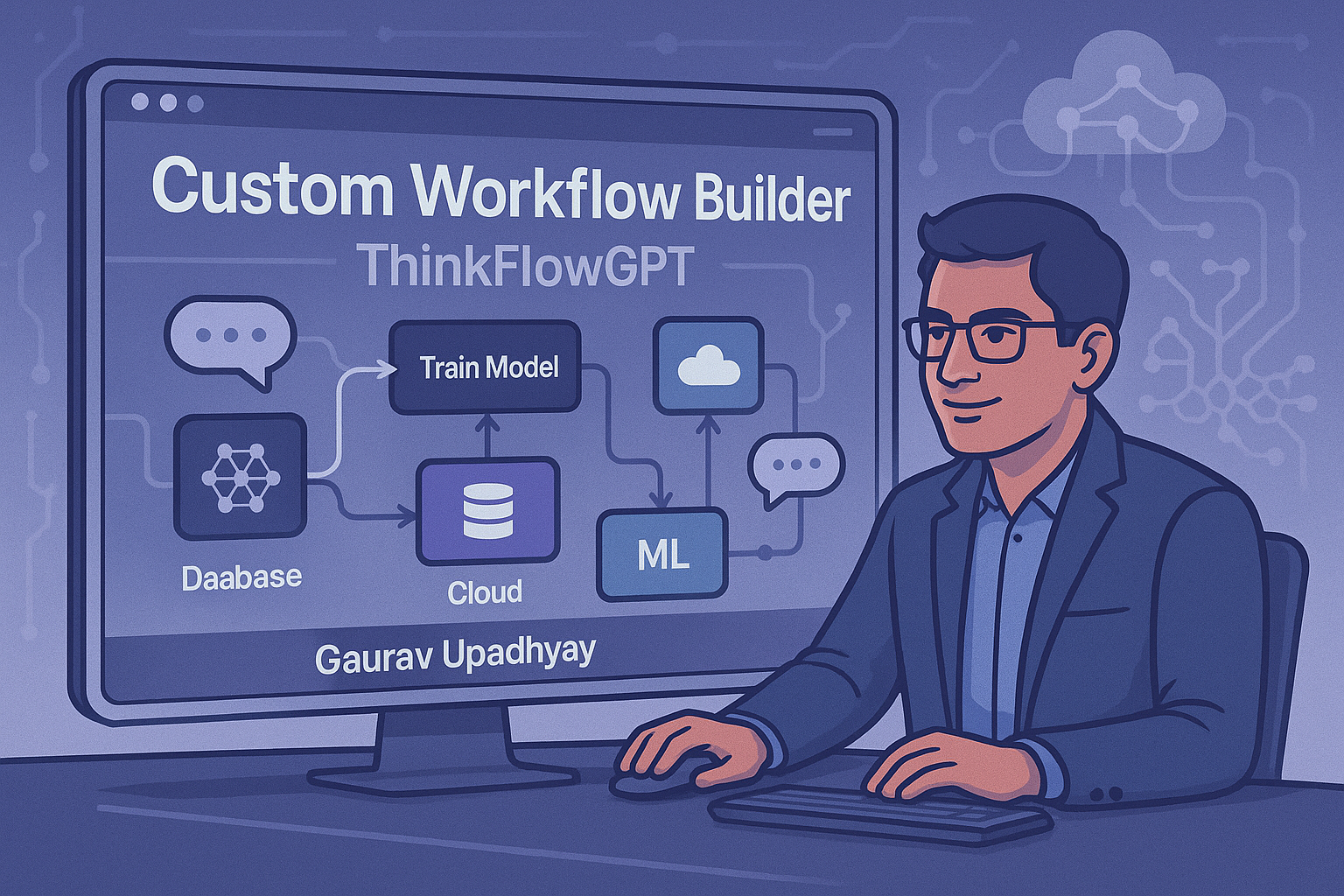
Building Custom Workflows with ThinkFlowGPT
In today's fast-paced world, automation is key to staying productive and organized. Whether you're a business owner, freelancer, or student, creating custom workflows can help streamline your daily tasks. ThinkFlowGPT makes this easy with a no-code platform that empowers anyone to build smart, AI-powered automations.
Why Build Custom Workflows?
Custom workflows help eliminate repetitive tasks, reduce human error, and ensure consistency across operations. ThinkFlowGPT allows users to create workflows tailored to their unique needs—without needing to write a single line of code.
Step 1: Define Your Objective
Start by identifying the task or process you want to automate. This could be something like auto-replying to leads, summarizing emails, generating reports, or managing client onboarding.
Step 2: Choose Your Trigger
In ThinkFlowGPT, every workflow starts with a trigger—an event that sets the automation in motion. Common triggers include form submissions, email events, webhook calls, or scheduled times.
Step 3: Add Your Actions
After setting up the trigger, add the actions you want the workflow to perform. Actions can include sending an email, generating content, updating databases, summarizing text with AI, or posting to social media. The intuitive drag-and-drop interface makes this process simple.
Step 4: Integrate AI Intelligence
One of the key benefits of ThinkFlowGPT is built-in AI functionality. You can plug in natural language prompts to generate text, summarize documents, or make intelligent decisions mid-workflow using the power of AI.
Step 5: Test and Launch
Before deploying, test your workflow to ensure everything runs smoothly. ThinkFlowGPT provides a test environment where you can simulate trigger events and watch the workflow in action. Once you're satisfied, publish it and let the automation begin.
Step 6: Monitor and Optimize
After your workflow goes live, use ThinkFlowGPT’s built-in analytics and logs to monitor performance. Identify any bottlenecks, tweak prompts or conditions, and continuously improve your automation over time.
Use Case Examples
- Lead Management: Automatically capture leads from a form, summarize their message, and notify your sales team on Slack or email.
- Student Research Assistant: Input a topic, and the workflow fetches sources, summarizes key points using AI, and stores the results in a database.
- Client Onboarding: Send a welcome email, schedule an intro meeting, and generate a personalized onboarding checklist.
Why Use ThinkFlowGPT?
ThinkFlowGPT combines the power of AI with the simplicity of no-code workflow building. Whether you're tech-savvy or just starting out, you can create meaningful automation that saves hours of work and boosts productivity.
Next Steps
Ready to build your first workflow? Visit ThinkFlowGPT to sign up and explore templates, tutorials, and community support. Automate smarter—not harder.
About Gaurav Upadhyay
Gaurav Upadhyay is the Founder of ThinkFlowGPT, an AI-driven workflow automation platform empowering students and small businesses to simplify complex tasks with ease. He’s passionate about building intuitive tools that make cutting-edge technology accessible to all.
Discover more at Gaurav Upadhyay's personal website or connect on LinkedIn.